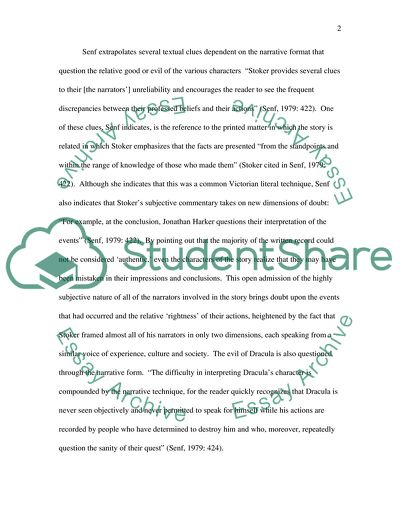Cite this document
(“Dracula by Carol Senf Article Example | Topics and Well Written Essays - 1000 words”, n.d.)
Dracula by Carol Senf Article Example | Topics and Well Written Essays - 1000 words. Retrieved from https://studentshare.org/literature/1540460-argument-analysis-on-a-critics-essay-on-tess-of-the-durbervilles-or-dracula
Dracula by Carol Senf Article Example | Topics and Well Written Essays - 1000 words. Retrieved from https://studentshare.org/literature/1540460-argument-analysis-on-a-critics-essay-on-tess-of-the-durbervilles-or-dracula
(Dracula by Carol Senf Article Example | Topics and Well Written Essays - 1000 Words)
Dracula by Carol Senf Article Example | Topics and Well Written Essays - 1000 Words. https://studentshare.org/literature/1540460-argument-analysis-on-a-critics-essay-on-tess-of-the-durbervilles-or-dracula.
Dracula by Carol Senf Article Example | Topics and Well Written Essays - 1000 Words. https://studentshare.org/literature/1540460-argument-analysis-on-a-critics-essay-on-tess-of-the-durbervilles-or-dracula.
“Dracula by Carol Senf Article Example | Topics and Well Written Essays - 1000 Words”, n.d. https://studentshare.org/literature/1540460-argument-analysis-on-a-critics-essay-on-tess-of-the-durbervilles-or-dracula.


